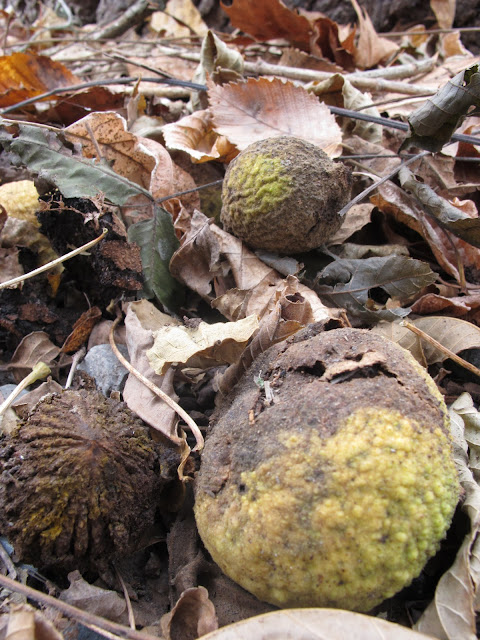Juglandaceae - Walnut Family
"A Year With the Trees" - Tree Number 56
Black Walnut
Juglans nigra
Spring
Summer
The black walnut’s leaf is 12 to 24 inches and has from 15 to 23 leaflets. Each single leaflet can be 2 to 3 inches long.
Fall
The Walnut develops in a green skinned ball on the tree. When it falls from the tree it turns black. After a few weeks on the ground, the black skin gets rotten and comes off and we are left with a delicious walnut. The walnut is encased in a very hard shell. One can be challenged getting the walnut out of it's shell.
This majestic Black Walnut tree has the look of fall. The leaves have turned yellow, most of the nuts have fallen to the ground and some have turned black. This black walnut tree lives in West Virginia at the New River Gorge National Park.
Winter
For the love of the trees,
Becky
"A Year With the Trees" - Tree Number 56
Black Walnut
Juglans nigra
Spring
 |
|
The beautiful deep-green catkins are all over the tree.
|
 |
| Black Walnuts growing in the summer |
 |
| These are the summer leaves of the Black Walnut tree with their finely toothed leaves. |
 |
| The Black Walnut in July |
Fall
The Walnut develops in a green skinned ball on the tree. When it falls from the tree it turns black. After a few weeks on the ground, the black skin gets rotten and comes off and we are left with a delicious walnut. The walnut is encased in a very hard shell. One can be challenged getting the walnut out of it's shell.
 |
| Black Walnuts on the ground in the Fall |
 |
| The Black Walnut Tree |
 |
| The Black Walnut Tree |
This majestic Black Walnut tree has the look of fall. The leaves have turned yellow, most of the nuts have fallen to the ground and some have turned black. This black walnut tree lives in West Virginia at the New River Gorge National Park.
Winter
 |
| The Black Walnut Tree
Asheville Botanical Gardens.www.ashevillebotanicalgardens.org
|
 |
| The Black Walnut Tree Asheville Botanical Gardens.www.ashevillebotanicalgardens.org |
 |
| The Bark of the Black Walnut tree is grayish black and deeply furrowed. This tree can grow up to 130 feet tall. |
For the love of the trees,
Becky
 |



No comments:
Post a Comment